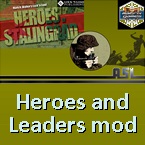asl3d
Posts: 6531
Joined: 2/6/2017
Status: offline

|
MUCH LOWER PRIORITY
Third, tank and AFV production was accorded a much lower priority (as in Britain) than aircraft production or shipbuilding, and the replacement of merchant ship losses alone or—more accurately—attempts to do so consumed 17% of Japanese steel output in 1943. In terms of steel production, Japan was outmatched by the USA by a factor of 1:13.87. Although tank production, theoretically, gained greater importance in 1945, in practice nothing changed; by then it was, in any case, far too late. Japan was by then no nearer to rationalizing tank design in favor of one or two basic models than she had been a decade before.
Japanese tanks suffered from a lack of attention to detail that undermined combat effectiveness even further. While Japanese armored cars were, arguably, more useful in patrolling areas like China, Manchuria and other captured territory, their value in combat against the Western Allies was limited, particularly as they were for the most part rather crude truck conversions and not "armored cars" as the term was understood in the West, being neither low-slung nor silent, and lacking all-wheel drive. Their piece-meal production meant that there were eight versions of the Sumida model alone spread between three variants. Other poor features in heavier tanks included the absence of power traverse, the fitting of shoulder-controlled main armament (like British versions, tiring and even dangerous to use in action), cramped and uncomfortable vehicle interiors, poor crew communication devices (i.e., reliance on voice tubes rather than on an intercom system), poor vision devices (an absence of periscopes—especially in the lighter tanks), and terrible turret layouts (i.e., one or two-man turrets). Although their good-quality optical equipment made Japanese gunnery accurate, this was more than counter-balanced by these other poor features; Japanese tanks have problems spotting or acquiring targets quickly, especially if moving. In addition, the absence of a coaxial MG in most Japanese tanks is a serious drawback.

 Attachment (1) Attachment (1)
_____________________________
Semper fidelis
|
 Printable Version
Printable Version





































 New Messages
New Messages No New Messages
No New Messages Hot Topic w/ New Messages
Hot Topic w/ New Messages Hot Topic w/o New Messages
Hot Topic w/o New Messages Locked w/ New Messages
Locked w/ New Messages Locked w/o New Messages
Locked w/o New Messages Post New Thread
Post New Thread